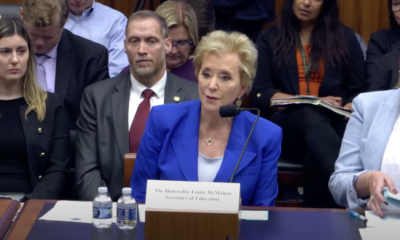border
Net Impact of Undocumented Immigrants on U.S. Taxpayers: A Double-Edged Sword

The undocumented population in the U.S. has become a complex theme, impacting multiple sectors from healthcare to education. This group, while often painted in a negative light, also contributes significantly to the economy through home purchases, running businesses, and fulfilling labor shortages in vital industries like agriculture and construction.
Recent findings from the Institute on Taxation and Economic Policy indicate that undocumented immigrants paid around $97 billion in federal, state, and local taxes in 2022—averaging nearly $9,000 per person. This includes a substantial $25.7 billion directed to Social Security, a system from which many of these workers will not benefit.
Experts like Tara Watson from the Brookings Institution emphasize the net positive contributions of immigration, despite acknowledged local fiscal strains during newcomers’ early years. However, conservative analysts such as Steven Camarota argue that these individuals create a considerable fiscal drain, especially when costs associated with education and healthcare are factored in.
Crime statistics reveal that the per capita crime rate among native-born Americans is significantly higher than that of undocumented immigrants, contradicting notions of immigrants as a societal threat. The Cato Institute reported that migrants are 26% less likely to commit homicide compared to native-born citizens.
The current estimated undocumented immigrant population stands at about 11 million, with 8.3 million employed individuals contributing to tax revenues. Despite paying Social Security taxes, they lack access to retirement benefits. As the workforce ages and the ratio of active workers to retirees narrows, the contributions from undocumented workers become increasingly vital to sustain the system.
On the healthcare front, the lack of insurance among undocumented immigrants continues to pose challenges. While some states provide limited coverage for certain demographics, the costs associated with emergency medical care remain high. The Federation for American Immigration Reform estimates that the annual cost of healthcare for undocumented individuals reaches $8.2 billion nationwide, with government expenditures for uninsured patients including undocumented immigrants totaling around $7.5 billion.
When examining welfare programs, undocumented immigrants largely remain ineligible for federal assistance, yet many households headed by such individuals often qualify for assistance through American-born children. Conservative estimates suggest that about 59% of these households access some form of public support, costing jurisdiction roughly $42 billion annually.
Education also presents significant financial implications. Approximately 4 million K-12 students belong to families with unauthorized immigrants. In Arizona alone, this represents more than 147,000 students, leading to estimated educational costs hovering around $68 billion annually. The legal ruling from Plyler v. Doe ensures that all children, regardless of legal status, have the right to a free public education, a controversial topic among some lawmakers.
Economically, immigrants play a crucial role in mitigating potential labor shortages as the workforce ages. The Migration Policy Institute shows that 77% of immigrants are of working age, contrasting sharply with 58% of U.S.-born citizens. In sectors like construction, such contributions are critical for economic stability.
Advocates like Jose Patiño share personal narratives exemplifying the immigrant experience and the sacrifices made by families in search of success. His story underscores a collective perspective on the contributions of undocumented immigrants, challenging the dominant discourse surrounding their place in society.


















